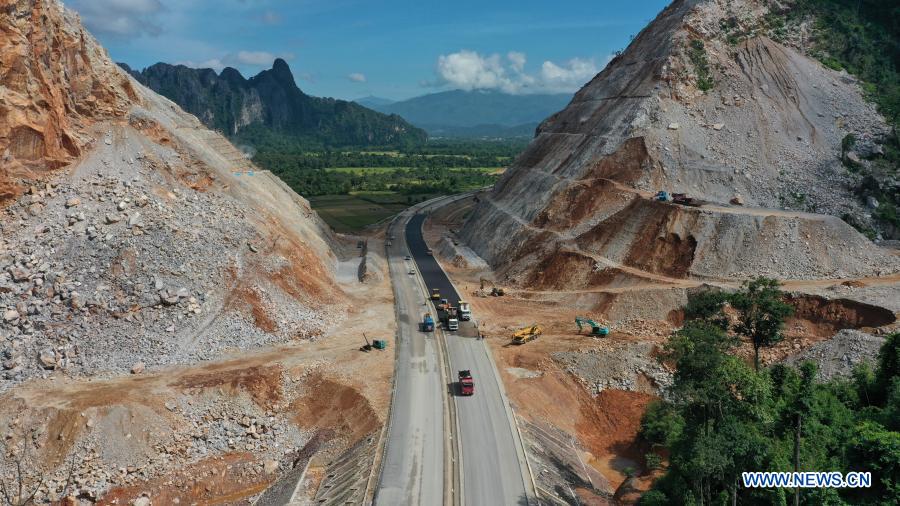Laos eagerly anticipates opening of first expressway
The China-Laos expressway starts in Vientiane and ends at the Laos-China border town of Boten, with an approximate length of 440 km. The project adopts Chinese technical standards for construction and operation and is planned to be implemented in four phases.
"This is our first expressway in Laos, and we hope that other places in Laos can have such good roads like this in the future," said 22-year-old Khonsavan Silasong, who was born in Naxaythong District of Lao capital Vientiane, where the starting point of the China-Laos expressway's Vientiane-Vangvieng section is located.
Aerial photo taken on Oct. 22, 2020 shows the Vientiane-Vangvieng section of the China-Laos expressway under construction in Vientiane Province, Laos. [Photo/Xinhua]
The China-Laos expressway starts in Vientiane and ends at the Laos-China border town of Boten, with an approximate length of 440 km. The project adopts Chinese technical standards for construction and operation and is planned to be implemented in four phases.
Construction of the first phase, namely the Vientiane-Vangvieng section, kicked off on Dec. 30, 2018 by China's Yunnan Construction and Investment Holding Group (YCIH) in cooperation with the Lao government. The section, to be the country's first expressway, is currently preparing for its opening to traffic.
The Vientiane-Vangvieng section is about 110 km long, designed as a two-way four-lane expressway with a design speed of 80 km to 100 km per hour.
Khonsavan studied Chinese language in Kunming in southwestern China, and returned to Laos over one year ago to join the expressway's construction and operation. She told reporters in late October that in the past, she would drive from Vientiane to Vangvieng with her family on a "too much different" road compared with the current highway, which is fast, safe and of good quality.
Xay Laoly, a 38-year-old driver from the remote northern Lao province of Phongsaly, over 730 km north of Vientiane, has been driving between Vientiane and Vangvieng for over seven years. He is eagerly looking forward to the opening of the expressway, because "it took more than three hours to get to Vangvieng before, but it will only take more than one hour (using the new expressway)."
Xay hopes that such a highway can run to his hometown so "it will be convenient to visit my hometown frequently, while now I can only tour back once to see my parents there in the mountains."
Yang Yun, a deputy engineering project manager of the expressway, has been working in the project for almost three years. He told reporters that the weather here is relatively hot with lengthy rainy season, and there is a lack of equipments and skilled workers, while the COVID-19 pandemic affected smooth supply of materials, all of which increased the difficulties in construction.
Fortunately, with the experience of the project team and the effective measures implemented, the construction has been pushed forward relatively fast, said the Chinese engineer.
"I am mainly working as an interpreter now, and will also join the expressway's operation in the near future," said Linda Noubualaphan, a Lao girl who joined the project after graduating from China's Wuhan University in May this year.
Linda told reporters that she is proud to participate in the expressway's construction and will go on to do her job well. "Laos and China are good neighbors and partners. I hope the two countries and peoples can join hands to produce a better and more beautiful future," she said.


